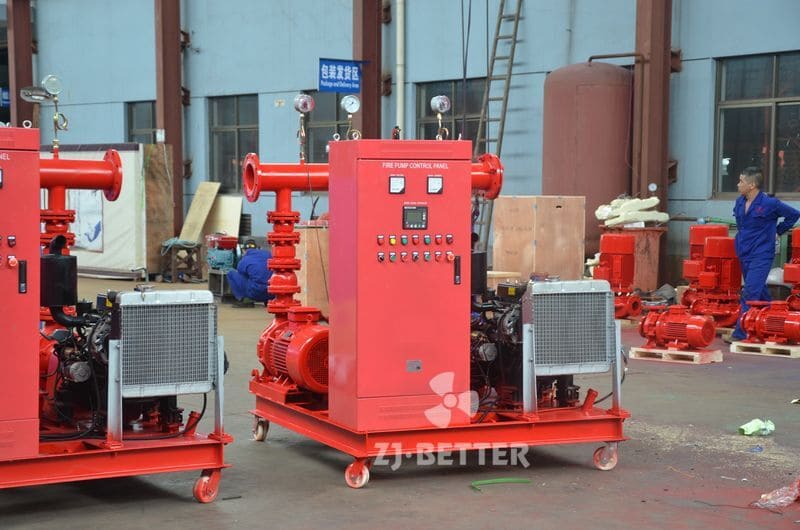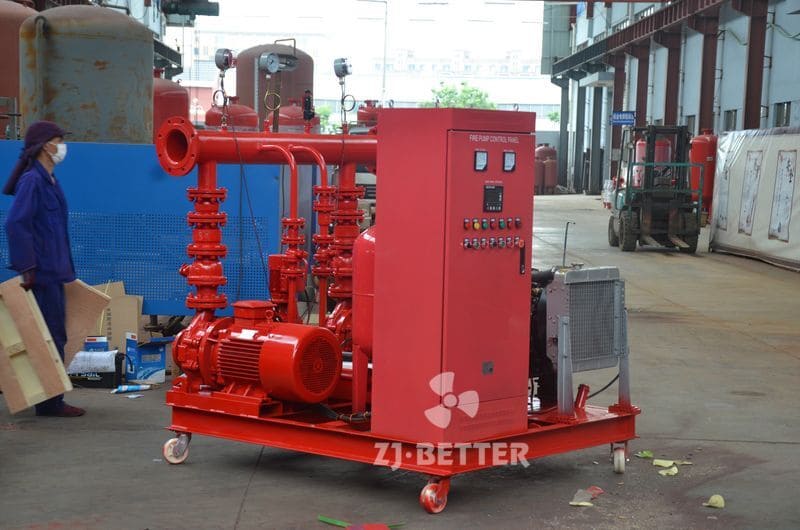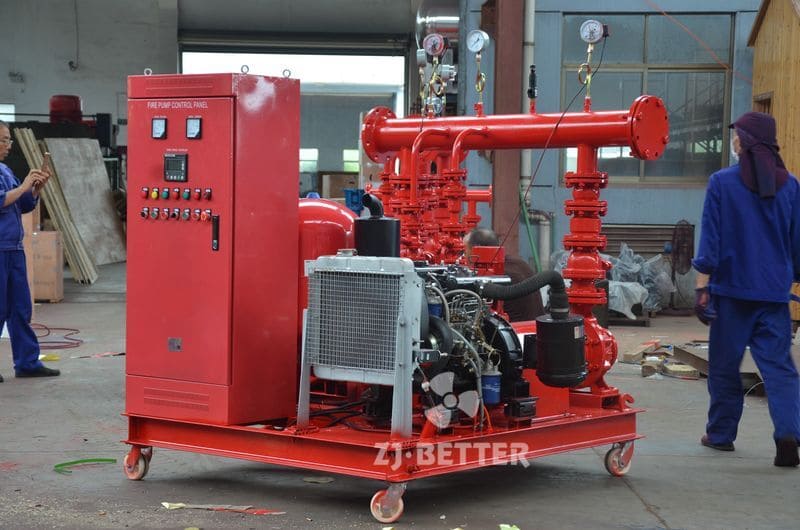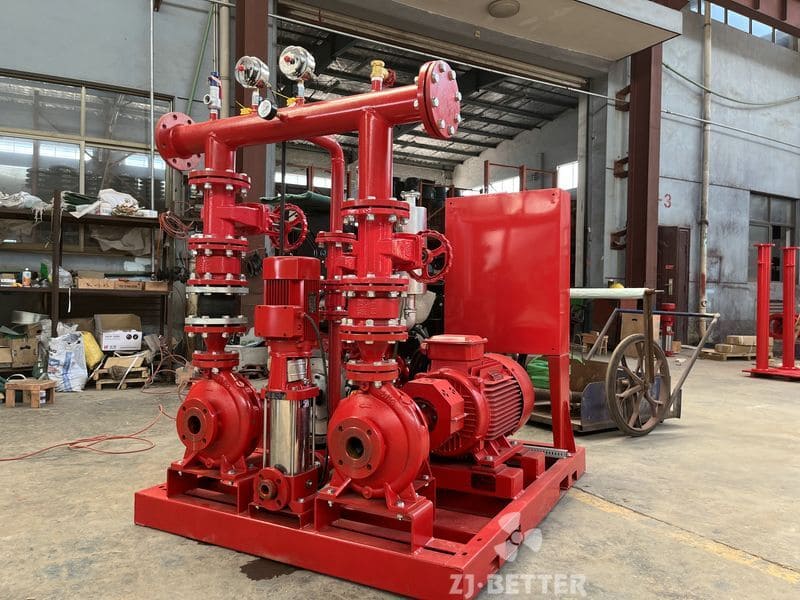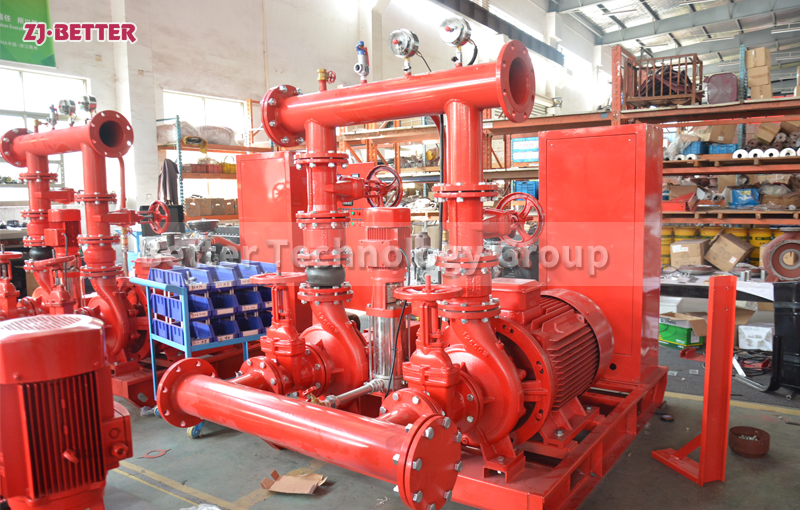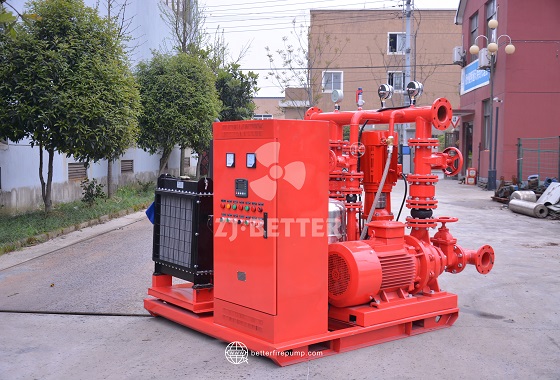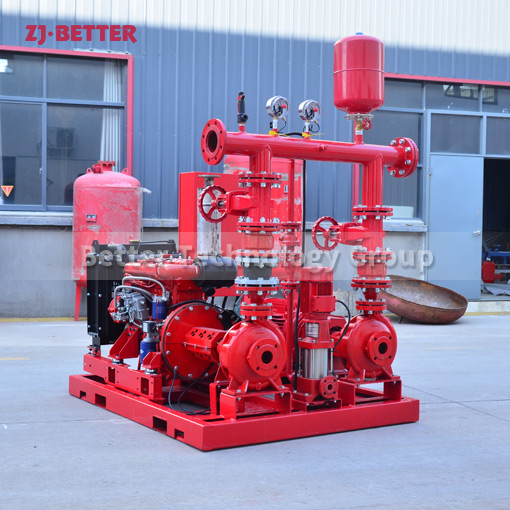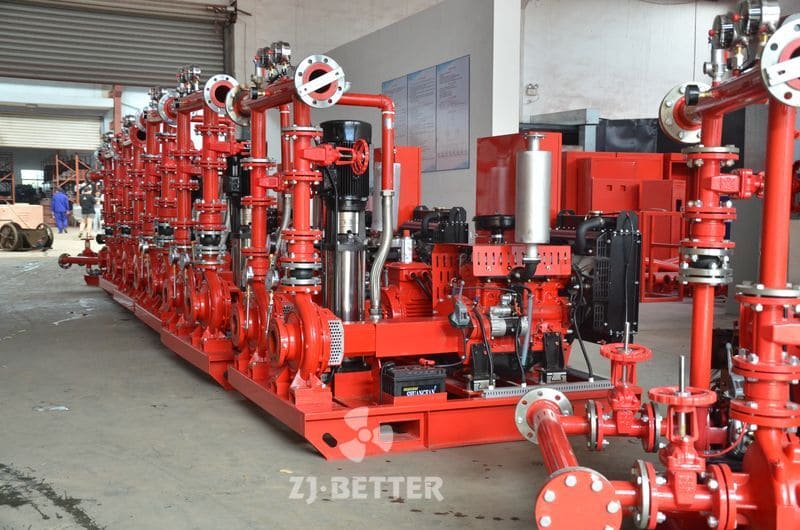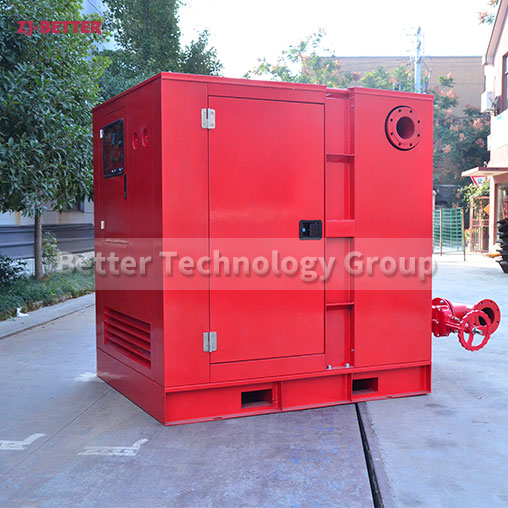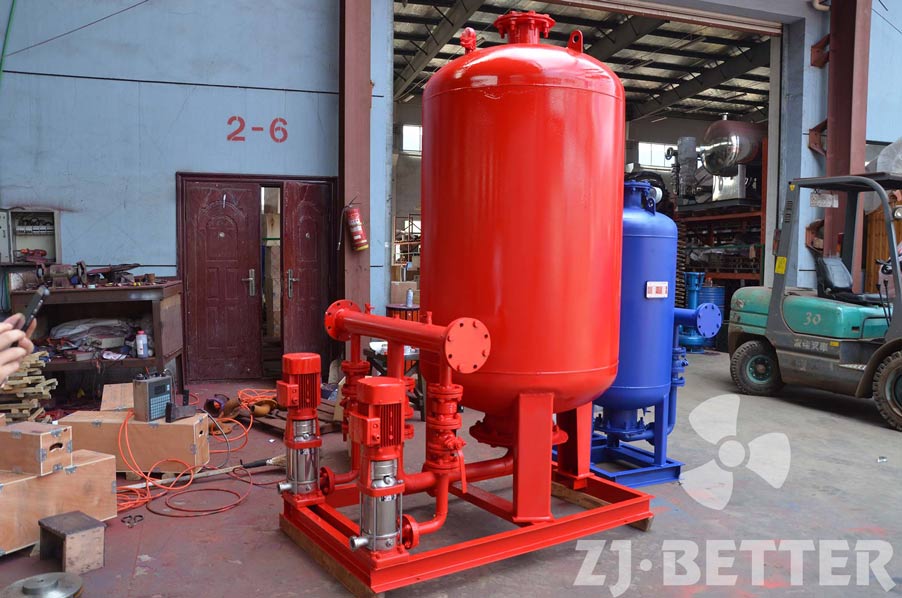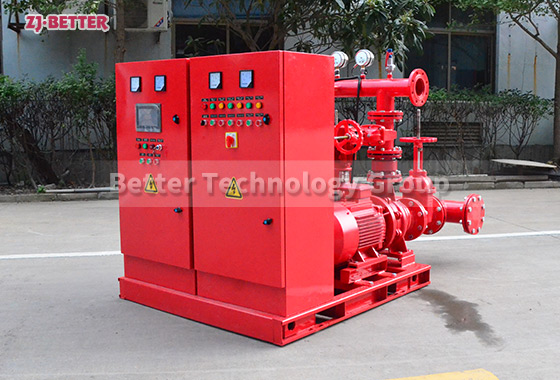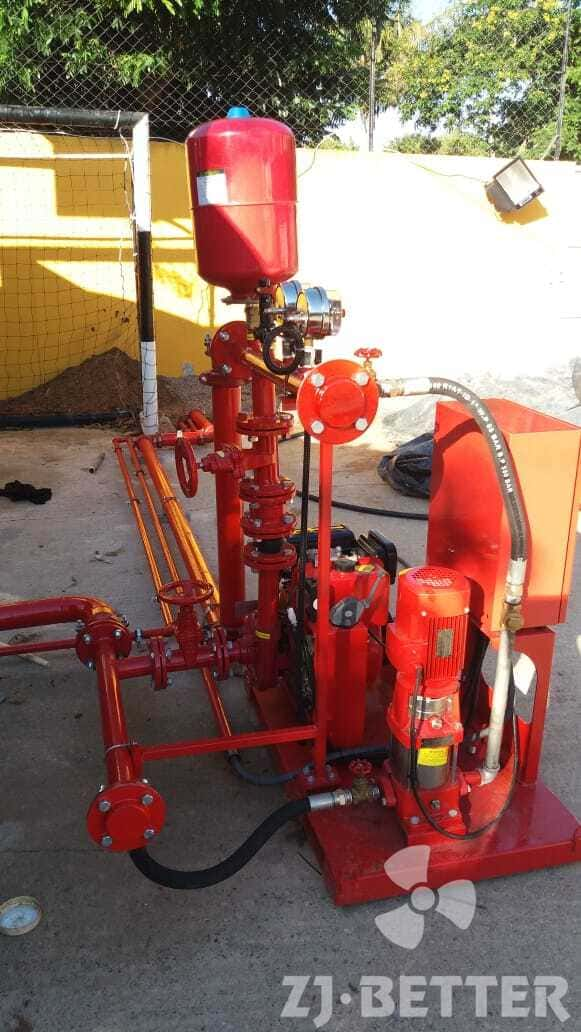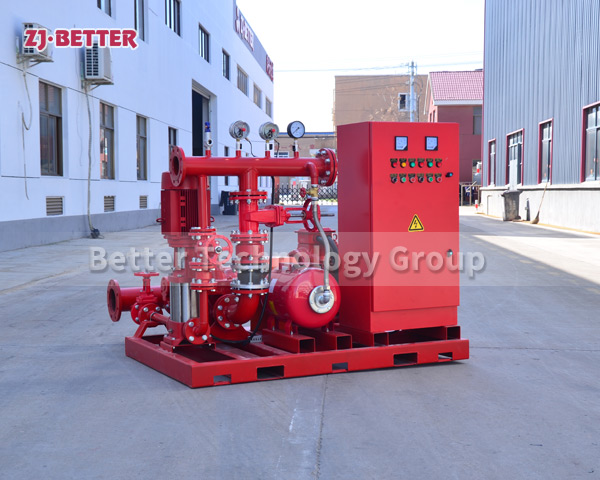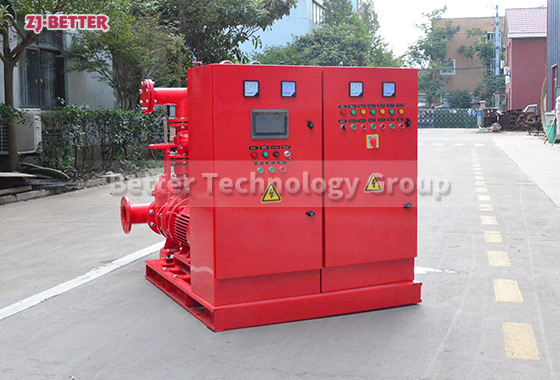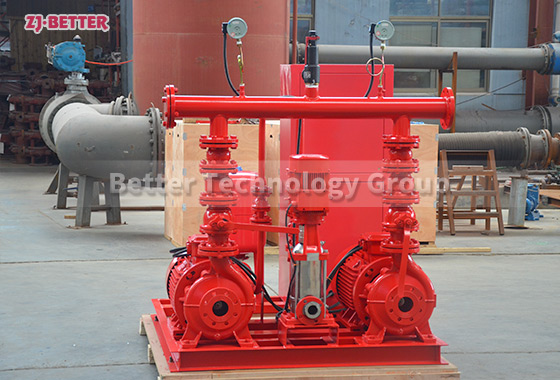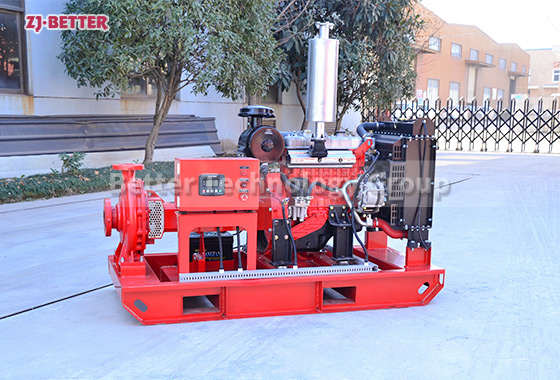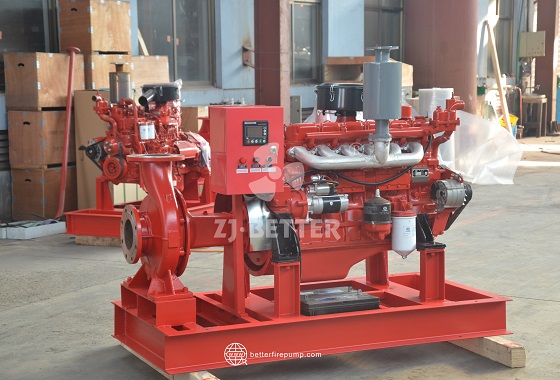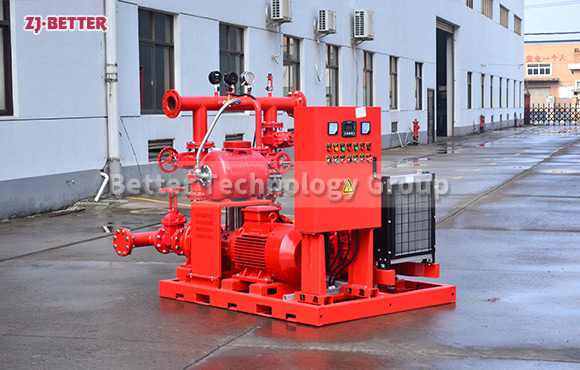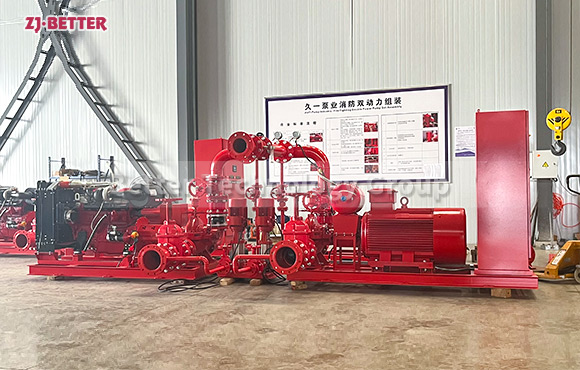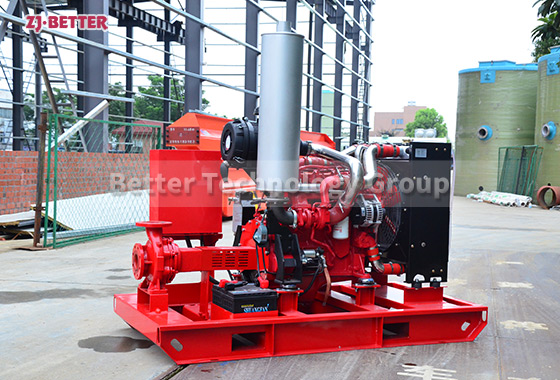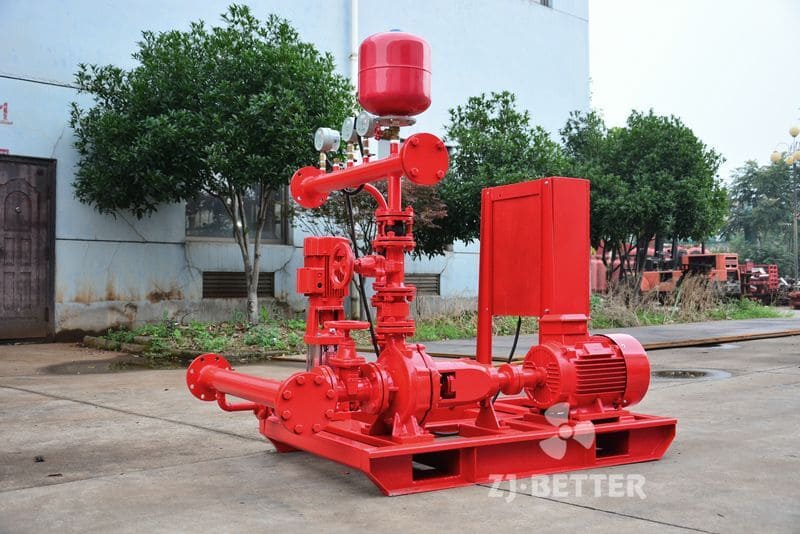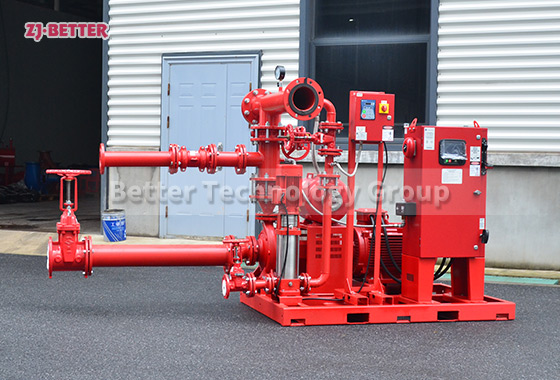High Quality EDJ Fire Pump Set
The EDJ fire pump group is composed of electric pump + diesel pump + jockey pump. The three pumps are automatically started and stopped. When the stabilized pump detects that the electric pump cannot operate normally, the diesel engine pump will start automatically. Can also be used, the fire pump set is widely used in various emergency firefighting occasions.
1. Electric pump, can use single stage pump, horizontal split case pump, end suction pump, multistage pump, material can be cast iron, stainless steel, and bronze impeller .
2. Diesel engine pump, with capacity and head equal to electric pump, with fuel tank, water tank,fan, control box.Diesel engine pump also can use end suction ,split case ,multistage pump can according to the flowrate ,head.Different Diesel Model use different tank capacity.
3. Jockey pump, horizontal or vertical, capacity will be small, but head should be higher than electric and diesel engine pump.Jockey material casing :cast iron ,shaft and impeller SS304.
4. Control panel: Auto Control of electric pump, diesel engine pump and Jockey Pump with overload, over current protection.
The control system has current, voltage, power display, and the operating status display of fire pump, diesel pump and steady pressure pump, diesel engine voltage, oil pressure, speed, running time display, manual pump control and automatic remote control.
5. Accessories: check valve, gate valve, pressure vessel, generally 0.6mpa, 1.0mpa, 1.6mpa, Pressure Gauge, Pressure Sensor, Common Pipe for Suction and Discharge, Flexible Joints and Flanges, Common Base plant.

